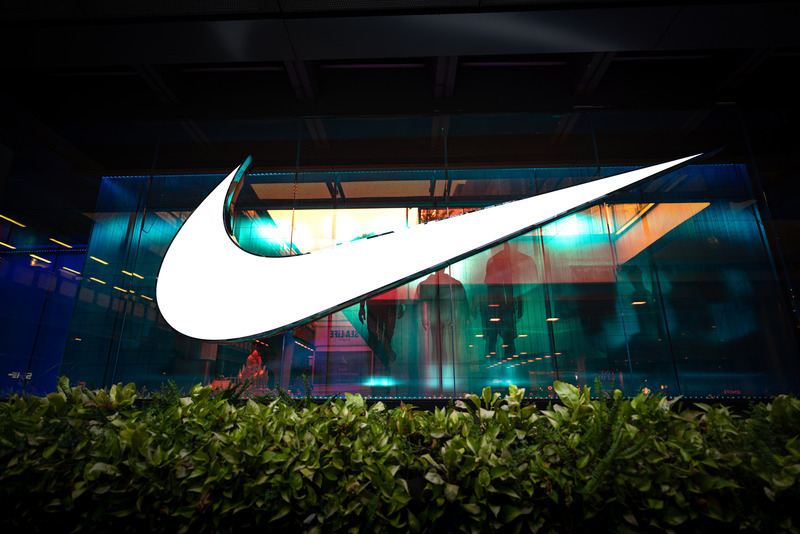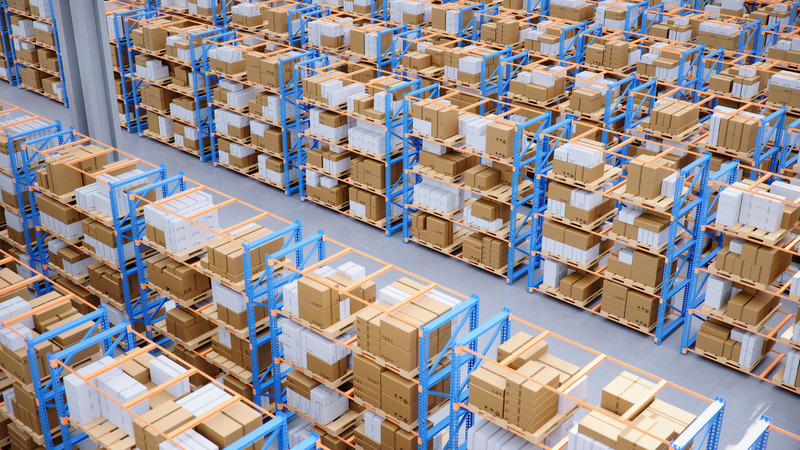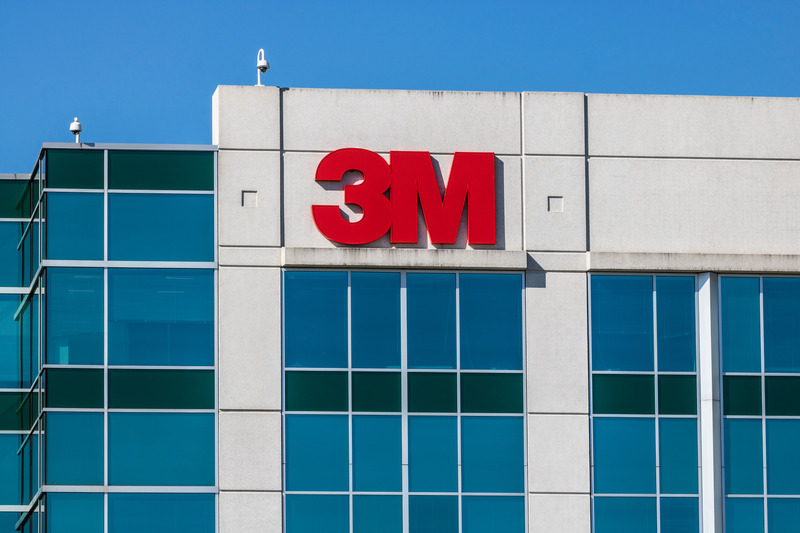With over 15 years of experience in finance, risk management and data analytics, Bill understands exactly what enterprise businesses should be thinking about as they build their corporate growth and risk strategies. Prior to joining Creditsafe in 2021, he spent six years at Dun & Bradstreet as Area Vice President of Finance Solutions and Third-Party Risk & Compliance.
“This is what you get for $400 million, huh?”
These words, uttered by Nike President Phil Knight on a conference call in 2001, signalled Nike would miss its third-quarter earnings that year by at least 28%. All because of supply chain challenges that caused Nike’s stock to drop a further 20%. The blame rested on the shoulders of i2 Technologies, a supply chain management software provider that had been hired to centralize Nike’s supply chain two years earlier.
Nike initially paid i2 $10 million to improve its fractured supply chain processes which had mutated into 27 separate order management systems because of rapid market growth. At the time, there wasn’t any model for Nike to follow and so it rushed ahead with i2’s supposedly game-changing technology.
Only the 2 to 3-year timeline Nike had expected for the change stretched out into 5 to 7 years. Glitches in i2’s system cost Nike an additional $100 million.
Ultimately, Nike was able to fulfil its vision because of its dominant market share. But Nike and i2 could have avoided making those supply chain mistakes if they had set realistic expectations at the start. Don’t make those same errors. To help you, this article features the most common supply chain mistakes and how to avoid them.

The 6 root causes of supply chain failures
1. Flawed sourcing strategy
The first mistake on our list is choosing unreliable suppliers. What we mean by this is suppliers who say one thing and do another. For example, you could be working with a supplier that claims to be sustainable and then find out that they have been greenwashing. Or a supplier could claim to be profitable on paper, but a review of their business credit report shows they’re up to their neck in debt and court cases and have fallen behind on their own payments for several months.
Another telltale sign of an unreliable supplier is that they use subcontractors as a “hidden factory” and no auditing has been done to check credentials. If you’re relying on only a small group of suppliers in a single country to produce most of your work orders, you could be opening yourself up to further risk. If a sudden disruption happens with those suppliers – like a natural disaster, worker strikes or geopolitical tension – then you could very well end up with a shortage of goods that are top sellers. And that means you could end up losing loyal customers who want and need those items.
2. Poor supply planning processes
Poor supply chain planning is another mistake we see a lot. It might involve not having any clear communication between buyers and suppliers. For example, a sales executive might misquote information to someone on the supplier side and it delays a contract exchange. In another scenario, the supplier may have failed to disclose lead times, which can cause problems on your end with production and delivery.
If these types of supply chain planning failures are happening often and you’re not doing anything to identify the root causes and find solutions for them, then they’ll keep happening over and over. It’s like that famous quote from Albert Einstein: “Insanity is doing the same thing over and over again and expecting different results.” At the end of the day, you have the power to fix these planning mistakes by getting to the heart of what’s causing them and building in processes, policies and systems to prevent them happening again in the future. That would certainly make Einstein proud – not to mention, it would improve your supply chain operations.
3. Lack of internal controls
Internal controls relate to control measures and management actions you set in place. The end goal is to use internal controls to spot and prevent weaknesses in your supply chain early on.
Doing regular audits of your suppliers’ factories is a good example of an internal control. If you regularly audit your suppliers, you won’t be surprised by news of the use of child labor or forced labor because you will have reviewed the records for all employees and can confirm if any children have been employed. To take that a step further, you could use compliance monitoring software to fully vet and verify your suppliers’ compliance.
Another example of an internal control is verifying the identity of all directors responsible for running your suppliers’ businesses. You want to make sure they’re all who they say are and that none of them have been convicted of fraud, bribery or other financial crimes.
4. Transportation bottlenecks
Your supply chain can’t function without transportation. It’s the lifeblood of the whole process –from sourcing raw materials to shipping goods from your suppliers’ factories to your warehouses to delivering goods to your customers.
Some transportation bottlenecks are beyond anyone’s control, such as bad weather conditions and natural disasters, traffic congestion and political strife. Others are controllable, like customs clearance issues or vehicle malfunctions. The latter all depends on the proactivity and planning of the companies involved. And then there’s global pandemics like COVID-19 that can throw entire supply chain networks into disruption and chaos.
The pandemic created major transportation bottlenecks for a lot of brands, including Nike. The footwear brand found itself mired in more cancelled purchase orders, a lower volume of wholesale shipments and labor shortages – all of which led to lower margins and excess inventory. To put this into context, Nike’s inventory swelled 31% to $7.4 billion by fiscal year end on May 31, 2020, compared to $5.6 billion at the end of fiscal year 2019.
5. Market conditions
Trying to predict market conditions can be tough. We know that supply chains can change frequently. Customer behavior and trends, governments, wars and labor numbers all have a direct impact on how quickly products are manufactured, shipped and sold.
As of 2024, market conditions in the US are being impacted by the Panama Canal and Suez Canal trade corridors. If these disruptions continue, trade maps may potentially need to be redrawn which will affect commerce in America for decades to come.
6. Compliance violations
Last but certainly not least, a failure to comply with supply chain legislation is a one-way ticket to destroying your company’s reputation. When you work with suppliers in other countries, you need to set up robust supplier compliance management policies and processes to avoid getting into bed (so to speak) with suppliers who are violating local labor laws and industry standards.
According to recent research from KnowTheChain, many of the world’s best known fashion brands aren’t doing enough to prevent forced labor in their supply chains. The report found that 20% of the 65 companies that were analyzed scored 5 out of 100 or below, meaning that they failed to provide and disclose remedies to those whose rights had been violated. KnowTheChain, the study’s author, called these results an “indictment in a sector in which human rights violations are consistently uncovered.”

The impact of supply chain failures & lessons learned
Supply chain bottlenecks lead to product shortages
Supply chain disruptions can often trigger product shortages. McDonald’s is the perfect example of this. In 2022, McDonald’s was hit by ingredient shortages at several of its locations, which led to shortages of French Fries (one of McDonald’s beloved menu items) and other potato-based products.
More recently, supply chain bottlenecks forced McDonald’s to spend more money on chicken, beef and packaging materials. All this has taken a toll on the brand’s profits. McDonald’s quarterly earnings report for the last three months of 2023 showed that operating costs rose by 14% to $3.61 billion, compared to the previous year.
Target is another example of how poor supply chain planning can lead to larger problems that end up leading to store closures. The hugely popular U.S. retailer first expanded into Canada in 2013. But just two years later in 2015, Target exited from Canada. The decision was driven by multiple factors. But in a candid Q&A on the Target website, CFO John Mulligan explained why the retailer’s expansion into Canada failed. “Our stores struggled with inventory issues and we were not as sharp on pricing as we should have been, which led to pricing perception issues. As a result, we delivered an experience that didn’t meet our guests’ expectations, or our own. Unfortunately, the negative guest sentiment became too much to overcome.

Supply chain failures: what you can learn
Poor inventory management leads to lost sales, increased costs and bankruptcy
Poor inventory management is what put the nail in Toys R Us’ coffin. Stores were overpacked, chaotic and had no customer service experience. Mark Cohen, director of retail studies at Columbia University’s Graduate School Of Business said the chain was “guilty of serial mismanagement.”
The once mighty retailer failed to keep up with the changing demands of customers and fell behind competitors that were willing to adapt. Toys R Us ended up filing for Chapter 11 bankruptcy in 2017.
Switching to new logistics partners without a plan
Let’s say you’ve been using a logistics provider who has repeatedly had issues with delays. And whenever you’ve tried to resolve the issues, you’ve been met with slow response times. If this happens a lot and the issues keep coming up, you may need to switch to a new logistics provider.
Now if you’ve been using a warehouse provider but they aren’t up to date with their technology, this could be creating problems with your orders or could be leading to slower processing times. Once again, it could be time for you to switch to a new logistics provider.
It could also be that one of your logistics providers keeps messing up your orders. If that happens over and over, it’s not just you who is going to feel the pain. Your customers will feel it too. If orders are messed up regularly, then there will inevitably be delayed in shipping goods to your end customers. And if shipping delays happen frequently, that could become a huge point of frustration for your customers that ends up pushing them away to your competitors.
Kentucky Fried Chicken is a household name around the world. For its customers across the pond in the UK, switching to a new third-party logistics provider had bigger consequences than it could have imagined at the time. KFC overhauled its British supply chain last year – forming a new partnership with DHL and Quick Service Logistics. That meant cutting food specialist distribution partner Bidvest from its supply chain. This decision backfired (badly), as the fast-food chain ran out of chicken and some of its 900 UK stores had to either close or shorten their working hours and menu options.
An insider said that KFC had “completely underestimated the enormity” of what they had got themselves into.
Hefty fines and reputational damage
Multinational conglomerate 3M got caught by the SEC for allegedly trying to hide payments to send Chinese government officials on secret shopping trips and vacations. This resulted in 3M paying over $6.5 million in fines, since they were in direct violation of the Foreign Corrupt Practices Act.
Another example is the Mediterranean Shipping Company, the world’s largest ocean carrier, which violated the US Shipping Act in three categories. This includes using an overly broad definition of ‘merchant’ in its bills of lading to charge third parties without consent, billing non-operating reefers at the reefer rate and cheating non-operating reefers out of free time. The consequence of this was paying a $63 million fine.

How to prevent supply chain failures
Get the facts straight
The first step to avoiding the supply chain mistakes we’ve pointed out is to get your facts straight. It’s seeing and understanding all the data about your suppliers that signals their financial health, payment behaviors, compliance history and more.
The type of data we mean can be found by running a business credit check and includes DBT, past due payments, legal filings average DBT, debt and more. Once you’ve seen these figures you can use the data to make the right business decisions. Of course, you should also be using compliance monitoring software to make sure your suppliers aren’t violating local labor laws and industry standards, not to mention aren’t included on any sanctions lists.
Diversify your supply chain
There’s plenty you can do to expand your network of suppliers. You can offshore in new countries, find businesses that create specialised products and that are efficient at producing in bulk.
Establish clear supply chain processes
From the moment you sign a new supplier or commit to overhauling your existing network, establish what you expect from them. Lay everything out in a contract so there’s no room for interpretation. Be clear about how products should be manufactured and shipped, timelines, payments etc.
If anything goes wrong (and there will be times when plans change and disruptions happen), you’ll have guidelines and protocols to fall back on.
Monitor and audit your suppliers
Finally, you should tie all your new systems together with a detailed monitoring strategy. This involves regularly auditing your suppliers so they comply with industry regulations. Cyber security risks, data breaches, sanctions violations and human rights/labor law violations can all affect your bottom line and hurt your company’s reputation.

About the Author
Bill James